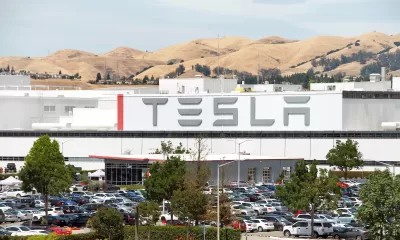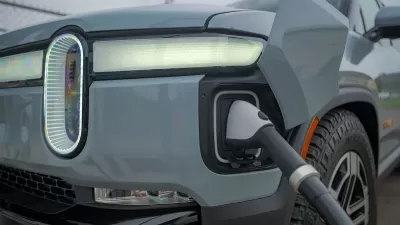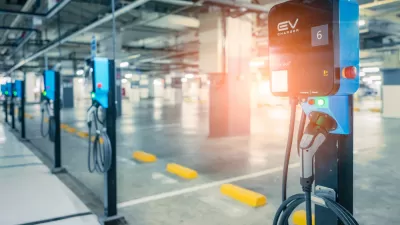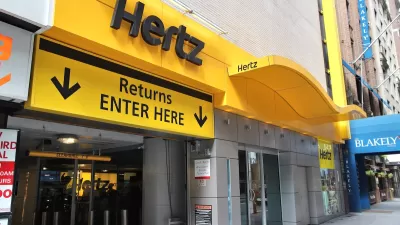A Wall Street Journal investigation found multiple and repeated violations of California’s air quality rules.

“Nothing says ‘green car company’ quite like being worse for air quality than every company in the state of California except for Chevron,” writes Collin Woodard in Jalopnik.
This is the case for Tesla, whose Fremont, California factory “violated air-pollution permits at its Fremont factory 112 times over the past five years and alleged it repeatedly failed to fix equipment designed to reduce emissions, releasing thousands of pounds of toxic chemicals in excess of permissible limits into the surrounding communities,” according to a recent Wall Street Journal article. “Their investigation found that not only were corporate bosses aware the Texas factory was polluting outside of regulations and that employees expressed fear they would lose their jobs if they reported environmental issues.”
Meanwhile, in Texas, the company removed itself from Austin’s jurisdiction to get around water pollution standards. “Sometimes during rainstorms, Tesla discharged a sludgy mix of mud and chemicals from occasional spills outside the plant, turning a ¾ mile stretch of the Colorado River into a mucky brown slick, according to pictures and videos viewed by the Journal.”
FULL STORY: Tesla Factory In California Pollutes So Much It Is Second Only To An Oil Refining Company

Americans May Be Stuck — But Why?
Americans are moving a lot less than they once did, and that is a problem. While Yoni Applebaum, in his highly-publicized article Stuck, gets the reasons badly wrong, it's still important to ask: why are we moving so much less than before?

Using Old Oil and Gas Wells for Green Energy Storage
Penn State researchers have found that repurposing abandoned oil and gas wells for geothermal-assisted compressed-air energy storage can boost efficiency, reduce environmental risks, and support clean energy and job transitions.

Placekeeping: Setting a New Precedent for City Planners
How a preservation-based approach to redevelopment and urban design can prevent displacement and honor legacy communities.

San Francisco’s Muni Ridership Grew in 2024
The system saw its highest ridership since before the Covid-19 pandemic, but faces a severe budget shortage in the coming year.

Colorado Lawmakers Move to Protect BRT Funding
In the face of potential federal funding cuts, CDOT leaders reasserted their commitment to planned bus rapid transit projects.

Safe Streets Funding in Jeopardy
The Trump administration is specifically targeting bike infrastructure and other road safety projects in its funding cuts.
Urban Design for Planners 1: Software Tools
This six-course series explores essential urban design concepts using open source software and equips planners with the tools they need to participate fully in the urban design process.
Planning for Universal Design
Learn the tools for implementing Universal Design in planning regulations.
Heyer Gruel & Associates PA
City of Moreno Valley
Institute for Housing and Urban Development Studies (IHS)
City of Grandview
Harvard GSD Executive Education
Salt Lake City
NYU Wagner Graduate School of Public Service
City of Cambridge, Maryland





























